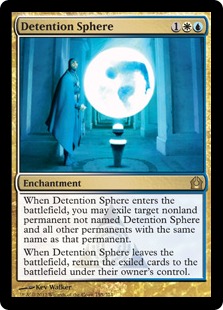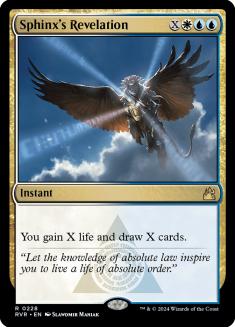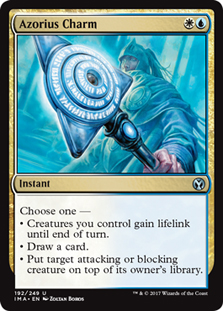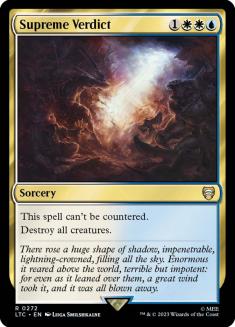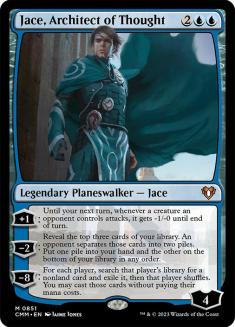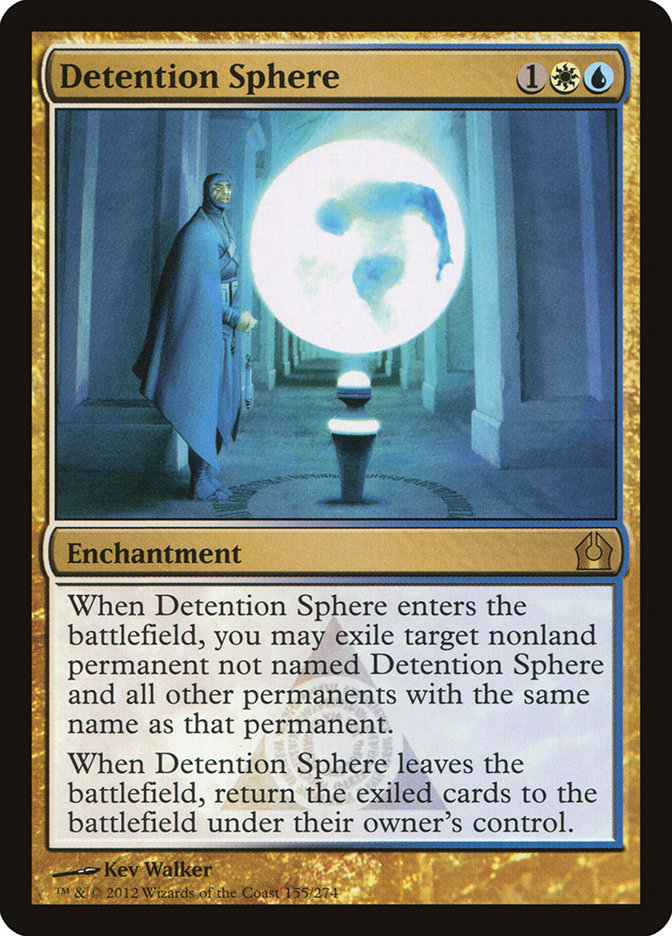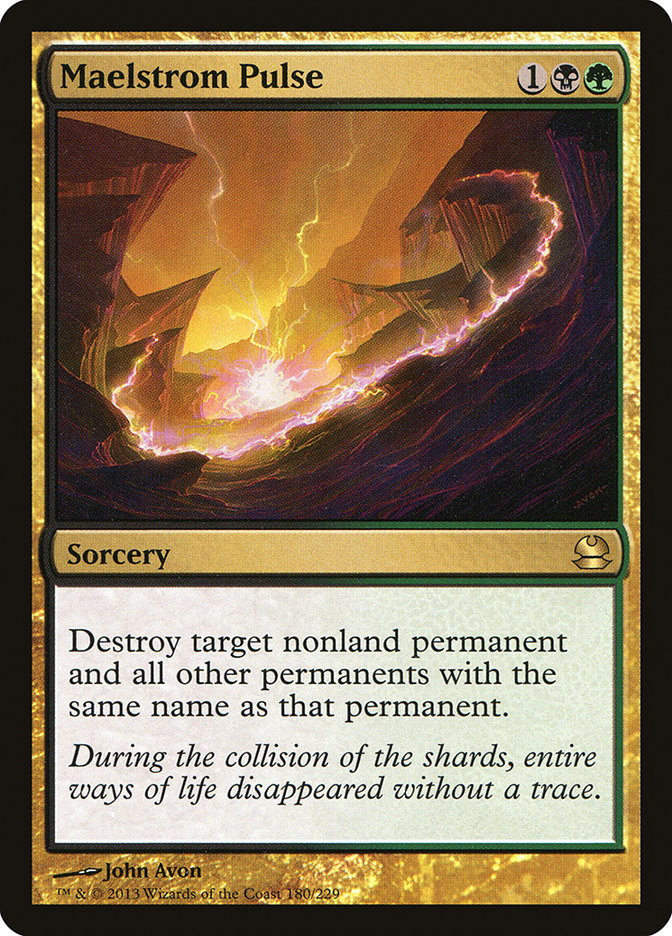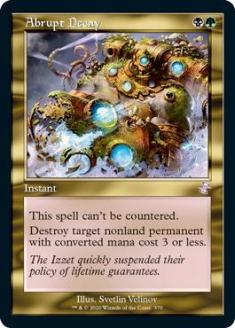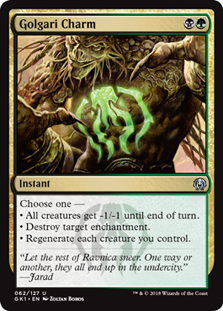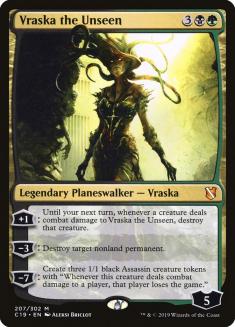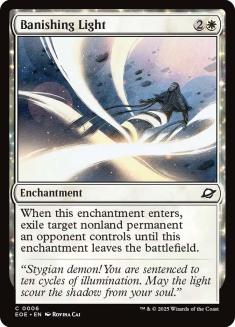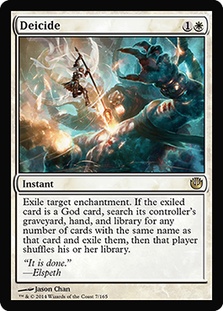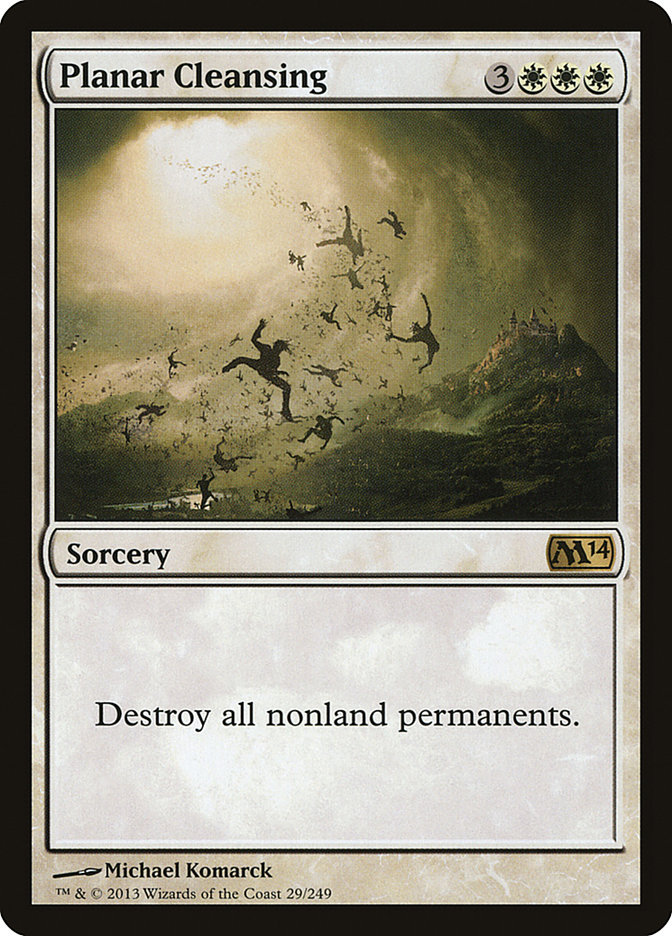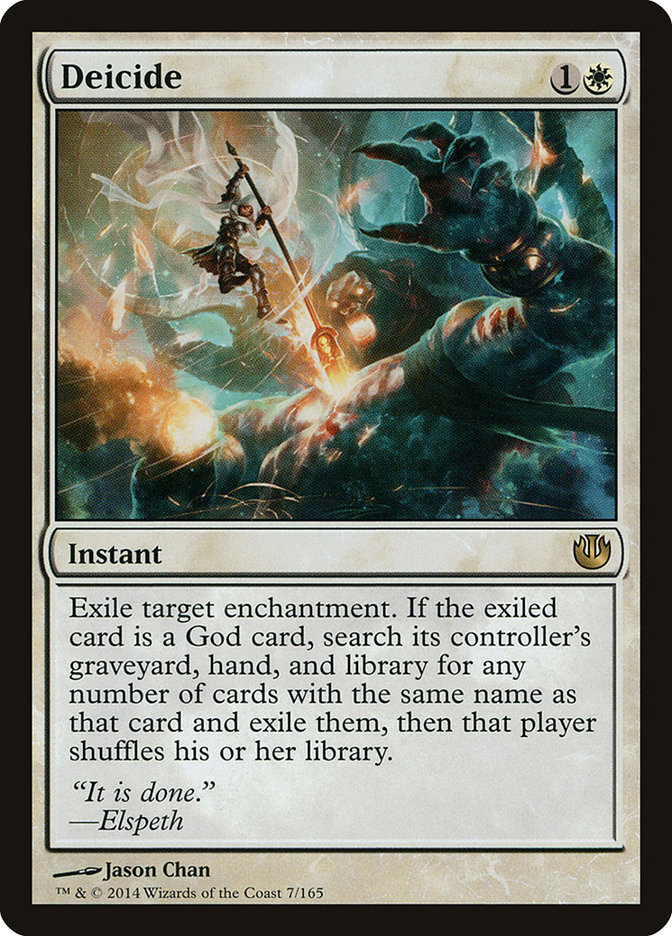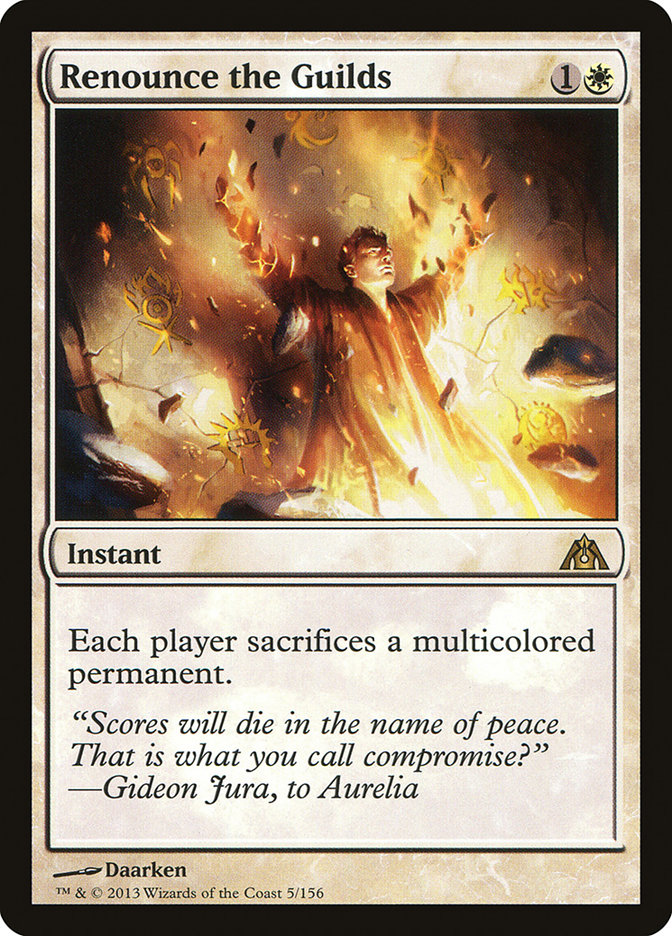I’ve been playing a lot of U/W Control over the last few months to some reasonable results: a Super IQ win, 2nd at States, and some other finishes at local
IQs. I was very happy with the deck and looking forward to taking it into the Open Series at New Jersey and translating those results into something more
meaningful. Unfortunately, things did not go as planned.
Creatures (1)
Planeswalkers (6)
Lands (15)
Spells (38)
- 6 Plains
- 6 Island
- 1 Last Breath
- 2 Syncopate
- 2 Divination
- 4 Azorius Charm
- 4 Supreme Verdict
- 4 Detention Sphere
- 4 Sphinx's Revelation
- 4 Dissolve
- 1 Fated Retribution
Sideboard

While I would make minor changes from tournament to tournament, the core of the deck always remained the same:
These twenty cards would always be at the top of my decklist. While some people don’t respect Azorius Charm as much as I do, it is one of the cogs that
makes the deck run so smoothly compared to its clunky Esper counterparts. Azorius Charm, while debated, is certainly not the problem. Unfortunately, the
problem lies in one of the deck’s greatest strengths.
For a very long time, Detention Sphere was essentially a Maelstrom Pulse. While there were narrow answers like Revoke Existence and the like, by and large
your Detention Sphere was going to sit in play until the game ended while it locked down whatever problematic permanent was troubling you. The ability to
deal with Planeswalkers like Domri Rade, enchantments like Underworld Connections, creatures, Thassa, God of the Sea, and swarms of tokens gave the deck a
backbone of versatility to go alongside its powerful creature removal.
Yet now your Spheres aren’t so safe.
While some of these cards have been in the format for quite a while, the advent of Temple of Malady has finally pushed them to the forefront. Now your
Detention Spheres are no longer safe, and this has become a pretty big issue.
One of the best ways to fight against a Supreme Verdict based deck like U/W Control is to focus on mixing in non-creature threats that must be dealt with.
For a deck like G/R Monsters, playing a Xenagos, the Reveler to top off the two creatures you already have in play is very powerful because even if the
control deck casts Supreme Verdict, you still have your Xenagos already in a play and ready to pump out more threats.
Likewise, this is why Underworld Connections is so powerful against us as well. While Underworld Connections is not a ‘threat’ like Desecration Demon is a
threat, similar to Sphinx’s Revelation the card advantage it creates can be very difficult to overcome. Even a card like Hammer of Purphoros can present
some major difficulties to a player trying to cast Supreme Verdict.
Without Detention Sphere as a reliable catchall to these problems, the U/W Control deck risks falling too far behind for its card advantage to matter. So
what are we to do? Abrupt Decay and friends are here to stay, and we must adapt or die.
Many control players are simply trying to go for the overload; they are playing the full set of Detention Spheres alongside a number of Banishing Lights.
While this kinda works, it also makes your deck more clunky and still leaves you vulnerable to disenchant effects. This sort of brute force solution is not
one I am thrilled with.
So what if we just killed all the things?
Creatures (9)
Lands (24)
Spells (27)
- 1 Plains
- 2 Dissipate
- 2 Island
- 4 Think Twice
- 2 Planar Cleansing
- 4 Azorius Charm
- 4 Supreme Verdict
- 4 Sphinx's Revelation
- 1 Ultimate Price
- 1 Dramatic Rescue
- 2 Devour Flesh
Sideboard

Ben Stark made Top 8 of Pro Tour Gatecrash with an Esper Control deck that leaned on a “what-that-card-is-legal?” sweeper as its catchall answer to
Planeswalkers and whatever else got in his way.
Planar Cleansing has some major pros and cons, but for most of the card’s existence the biggest deterrent from playing it was simply that you could not
play it and Detention Sphere in the same deck. With Detention Sphere being one of the premier removal spells in the format, this major failing sent Planar
Cleansing to the back of rare binders to be forgotten. But with Detention Sphere’s stock falling, and a real need to be able to answer a wide variety of
permanents still omnipresent, perhaps it is time to start cleansing the planes.
We’ve been given a glimpse of the power of Planar Cleansing with the card Fated Retribution, and anyone who has cast the card against G/R Monsters can
surely attest to the power of dismantling a board of multiple creatures and Planeswalkers. However, with Mono-Black Devotion decks of various colors and
sizes being one of the most dominant decks in the format, not being able to answer Underworld Connections has been a major failing of the card. Seven mana
is also a ton more than six mana, and while Fated Retribution being an instant is nice and tricky it is definitely not worth the extra mana.
If we decide to turn to Planar Cleansing, it’s definitely going to require a pretty fundamental retooling of the deck. We’re still going to need other
catchall answers to fill the void left by Detention Sphere and to ensure that we make it to six mana intact to cast our Planar Cleansing.
One car that really impressed me at the Open was Deicide. Pretty much every single deck in the format has at least four or five targets for the card, with
some having many more. It also does a great job at answering some of the best cards in each of the top decks, with the most important being Underworld
Connections; Courser of Kruphix; Detention Sphere; Eidolon of the Great Revel; Herald of Torment; Thassa, God of the Sea; and so on.
I think we are definitely at a point in the format where maindecking Deicide, or its brothers in arms Keening Apparition or Wear // Tear, is very
reasonable. In fact, it is very debatable if the one-mana instant appeal of Wear // Tear isn’t just even better. This is directly contingent on how much
play Thassa, God of the Sea and Erebos, God of the Dead are currently seeing.
While usually a sideboard card, Negate also has a lot of function in the current environment. While it seems more suited for control mirrors, Negate is a
card I actively board in against G/R or Jund Monsters decks as their best cards against us aren’t creatures. Negate can even counter bestow effects from
the aggressive decks that might not have as many targets.
Another card in the “you can’t play this with Detention Sphere, therefor you can’t play it” camp, Renounce the Guilds is actually a very powerful card.
While I don’t think the format is ripe for it maindeck at the moment, it does a great job at answering the multi-colored Planeswalkers, basically every
card in a G/W or Naya deck, and the hybrid creatures of any devotion-based deck.
So let’s put it all together:
Creatures (1)
Planeswalkers (5)
Lands (15)
Spells (39)
- 6 Plains
- 6 Island
- 2 Last Breath
- 2 Syncopate
- 1 Quicken
- 1 Negate
- 2 Divination
- 2 Planar Cleansing
- 4 Azorius Charm
- 4 Supreme Verdict
- 4 Sphinx's Revelation
- 1 Wear
- 4 Dissolve
Sideboard

One of the nice things about the deck is that you get to operate a little more at instant speed in the early/midgame, which makes your counterspells more
effective. Instead of having to tap out to Detention Sphere something, you can wait till their end step and either counter what they play or deal with it
then. The counterspells also gain more importance as catchall answers to the cards that Detention Sphere used to deal with, and it’s possible we might want
one more.
Renounce the Guilds takes the sideboard slot of Pithing Needle, which we don’t want to play with Planar Cleansing, to help deal with the G/R Planeswalkers,
while we also get the new Reprisal as an answer to Mistcutter Hydra; Obzedat, Ghost Council; and other fatties.
This is definitely the deck I will be testing for the upcoming opens, and I look forward to see how it works out. Planar Cleansing is a very unique and
powerful effect, and can pull you back into games like very few other cards can. Imagine this scenario:
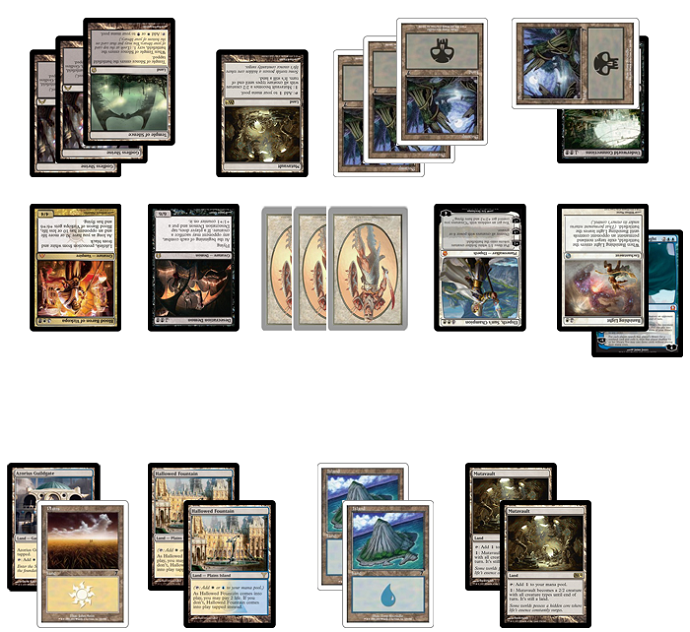
And now imagine casting Planar Cleansing.
For some people, Magical Christmas Land is casting Garruk, Caller of Beasts on turn 3 or triple Burning-Tree Emissary draws; for me, it’s casting Planar
Cleansing on a board like this.
Let’s hope reality lives up to expectation.

